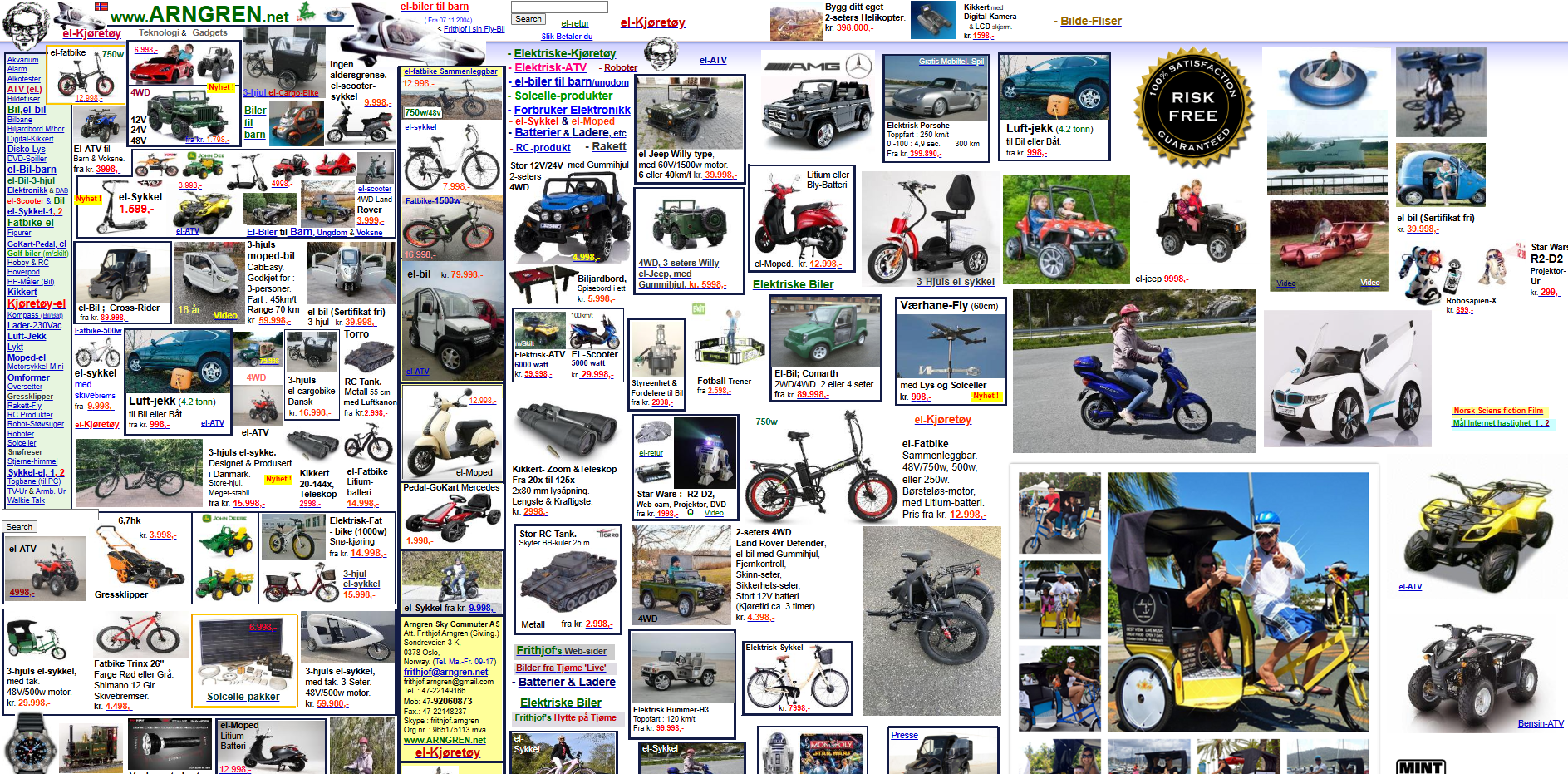1. What is accessibility?
 What do you think of this website?
What do you think of this website?
You may have heard the term accessibility used before in the context of access to buildings on campus at UQ.
In an online context, the term ‘accessibility’ refers to making content equitably available to all users. This means that the information on a website should be accessible to people regardless of their level of education, speed of internet access, or any disabilities that they may have.
Most websites have made efforts to improve their websites to make it easier for all users to navigate them.
Website improvements
Compare the Amazon website from 2005 to the current version.
Compare the Amazon website from 2005 to 2022 by using the slider. Screenshots retrieved August 26, 2022.
In fact, just asking you to “take a look” at an image is an example of not considering accessibility, as it excludes people with visual impairments. A person who is blind can’t “take a look”. When websites use images they should provide alternative text (alt-text), or assistive software readable image descriptions written into the code of the website. Websites should also use inclusive terminology so instead of “take a look”, we could use “visit, “check” or “consider”.
Why be accessible?
Accessibility benefits everyone. Accessibility isn’t just about altering existing things to help a specific group of people; it’s about changing how we do things on a structural level to remove barriers that could affect anyone. Making digital content accessible makes them easier for everyone to use.
Accessibility is not just about disability. The next video demonstrates how inaccessible websites can cause problems for people with and without disabilities.
Web accessibility perspectives: clear layout and design (YouTube, 1m05s)
The video shows how bad design affects everyone. It only takes a few small changes to make content more easily available to anyone who might want to access it.
![]() This video is an alternative version of the clear layout and design video:
This video is an alternative version of the clear layout and design video:
Web accessibility perspectives: clear layout and design – audio described version (YouTube, 1m53s)
How is it different to the first version? Is it more accessible?
The video is an example of audio-description. Audio-description is a specialised way to make visual content more accessible to people with visual impairments by narrating the visual aspects of a video. This isn’t just useful for people with visual impairments – if you’re watching something in the background while doing something else on your computer, having audio-description turned on can mean you don’t miss vital moments. Some online video platforms provide audio-description, including Netflix and Amazon Prime video. These are subscription services so are not available to everyone, but other providers are catching up, ABC and SBS provide audio-description to some of its programs.
There are plenty of other examples of specialised accessibility features and technologies which might be useful for particular groups of people, such as screen readers, eye tracking and sip/puff switches.
![]() Read Learning Barriers and Assistive Technology from the Australian Disability Clearinghouse on Education and Training (ADCET) for an overview of a range of learning disabilities and the Assistive Technologies that can help alleviate the barriers.
Read Learning Barriers and Assistive Technology from the Australian Disability Clearinghouse on Education and Training (ADCET) for an overview of a range of learning disabilities and the Assistive Technologies that can help alleviate the barriers.
Because different accessibility features have so many possible uses, a lot of people find that they benefit from them in different ways. One of the most common uses of accessibility features is when we use them as study hacks – ways to help us study or work in the most comfortable and convenient way. In fact, a lot of accessibility features have been marketed as productivity tools because they’re so effective at helping us to get work done.


